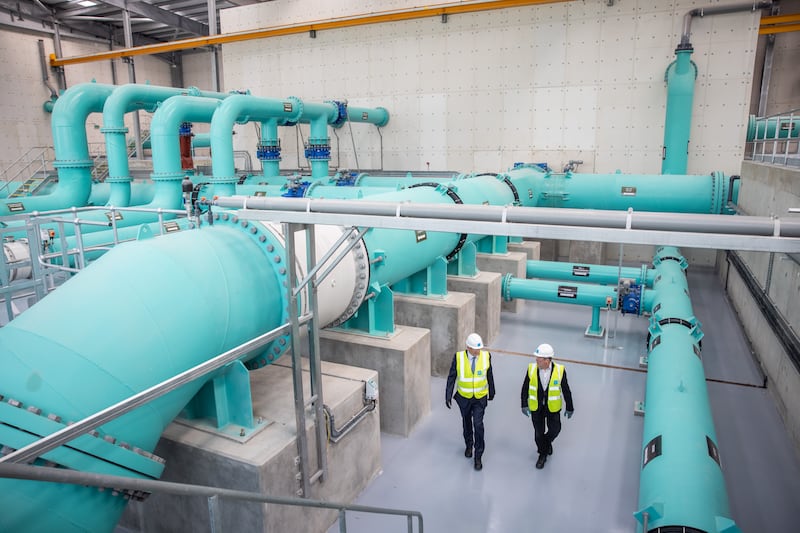A state-of-the-art covered reservoir in Stillorgan, opened by Minister for Housing Darragh O’Brien on Monday, is intended to secure the quality of water supply to more than 200,000 Dubliners.
The reservoir, which can store more than 160 million litres of treated drinking water, replaces three reservoirs that were open to the elements and posed a risk of contamination by birds, animals or humans illegally swimming in them.
The project involved an investment of more than €50 million by Irish Water and is part of an overall €150 million upgrade to the Vartry scheme.
Irish Water chief executive Niall Gleeson said the Stillorgan reservoir was now linked to the Ballymore Eustace-fed reservoir in Saggart, Co Dublin, a move that builds resilience into the network, providing water across south Dublin. He said the capital would need a new water source in the coming years and noted that many other cities would be very envious of having a resource such as the river Shannon, located just 150km from the capital.
READ MORE
Mr Gleeson said Irish Water was not ignoring the issue of leaking pipes and that €2 billion would be spent on a remedial programme for leaks over time. But, he said, this would not be enough for the region and “it needs the Shannon as well”.

John O’Donoghue, Irish Water’s regional operations manager for the Dublin and eastern region, said demand in the Dublin region is currently about 575 million litres per day and the network has capacity for 606 million litres, leaving little wriggle room in the event of a drought.
He said potential issues such as hose-pipe bans and water shortages this summer depended largely on the weather in the weeks ahead. He said the double difficulty with a drought was that in a time of reduced supply “that is when people get the paddling pools out”.
However, he said the key message of water conservation was being heard by householders. He said this was a year-round issue and that “just because it rains more, does not mean the capacity increases”.
The original Vartry water supply scheme was developed by Dublin Corporation in the 1860s and includes two reservoirs, a water-treatment plant and a 4km tunnel under Callowhill, between Roundwood and Newtownmountkennedy in Co Wicklow, which was big enough to drive a small car through.
It also included 40km of trunk mains that deliver water from the Vartry lakes to the storage reservoir at Stillorgan. The scheme was a significant engineering feat when it was built, with much of the ground and building works being carried out and completed using only picks, shovels, horses and carts. At the time, the scheme improved sanitation in Dublin city and helped reduce outbreaks of cholera, typhus and other diseases associated with contaminated water.
[ New Stillorgan reservoir to ensure safer water supply for south DublinOpens in new window ]
The original Stillorgan reservoir site comprised three open reservoirs and was one of the last remaining uncovered treated water reservoirs in Europe. Construction work began on the upgrade in 2018 with the draining of one of the reservoirs in the complex, known as the Gray Reservoir, which had not been fully drained since being built in the late 1800s. The new covered reservoir was then constructed within its footprint.
[ Quality of drinking water for one million people needs improvement – EPAOpens in new window ]
The reservoir and associated infrastructure has the capacity to support water demand to 2031 and beyond. Irish Water previously installed an ultraviolet disinfection system to mitigate the recontamination risk of drinking water stored at Stillorgan, which resulted in the site being removed from the Environmental Protection Agency’s remedial action list in 2015.









